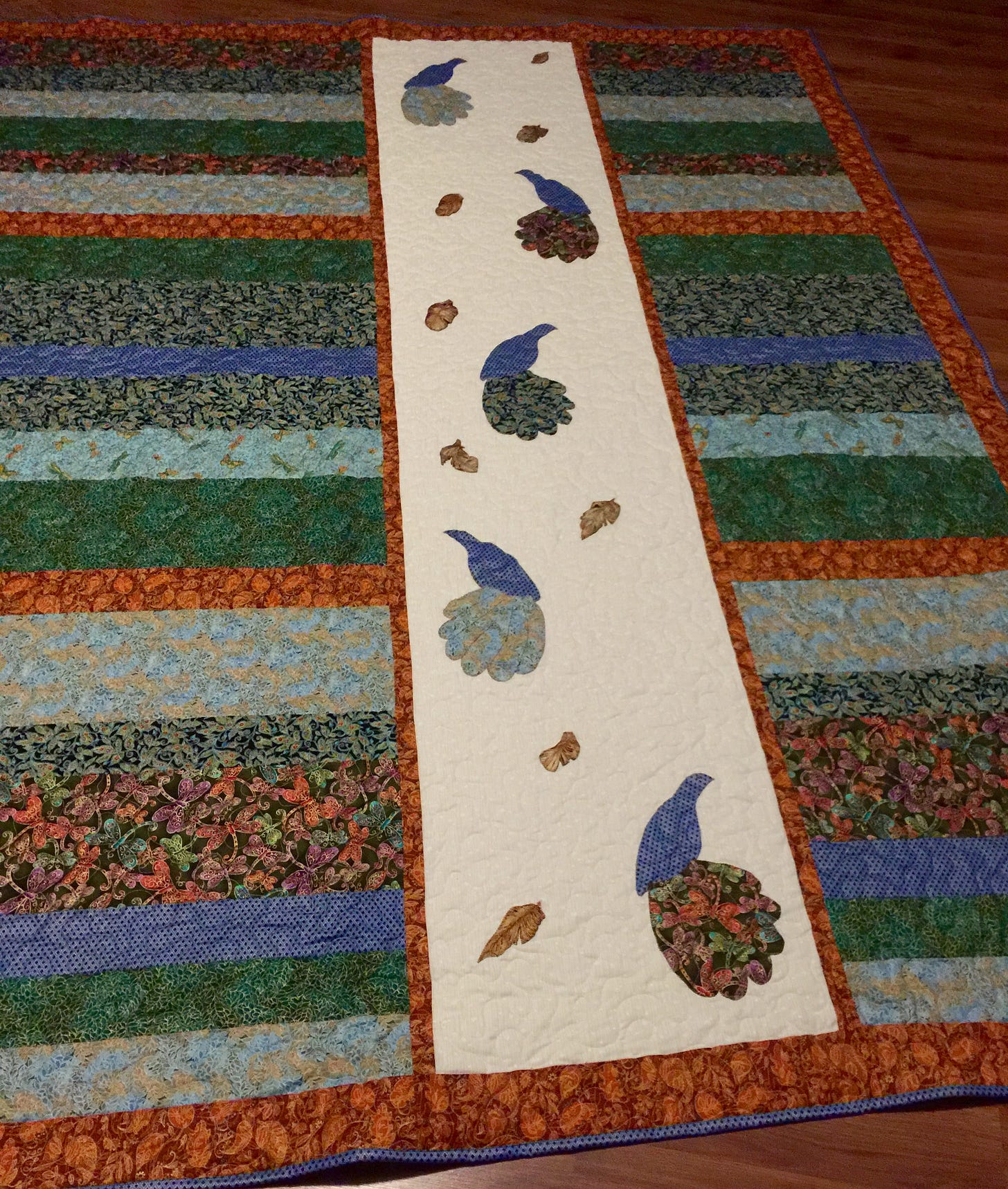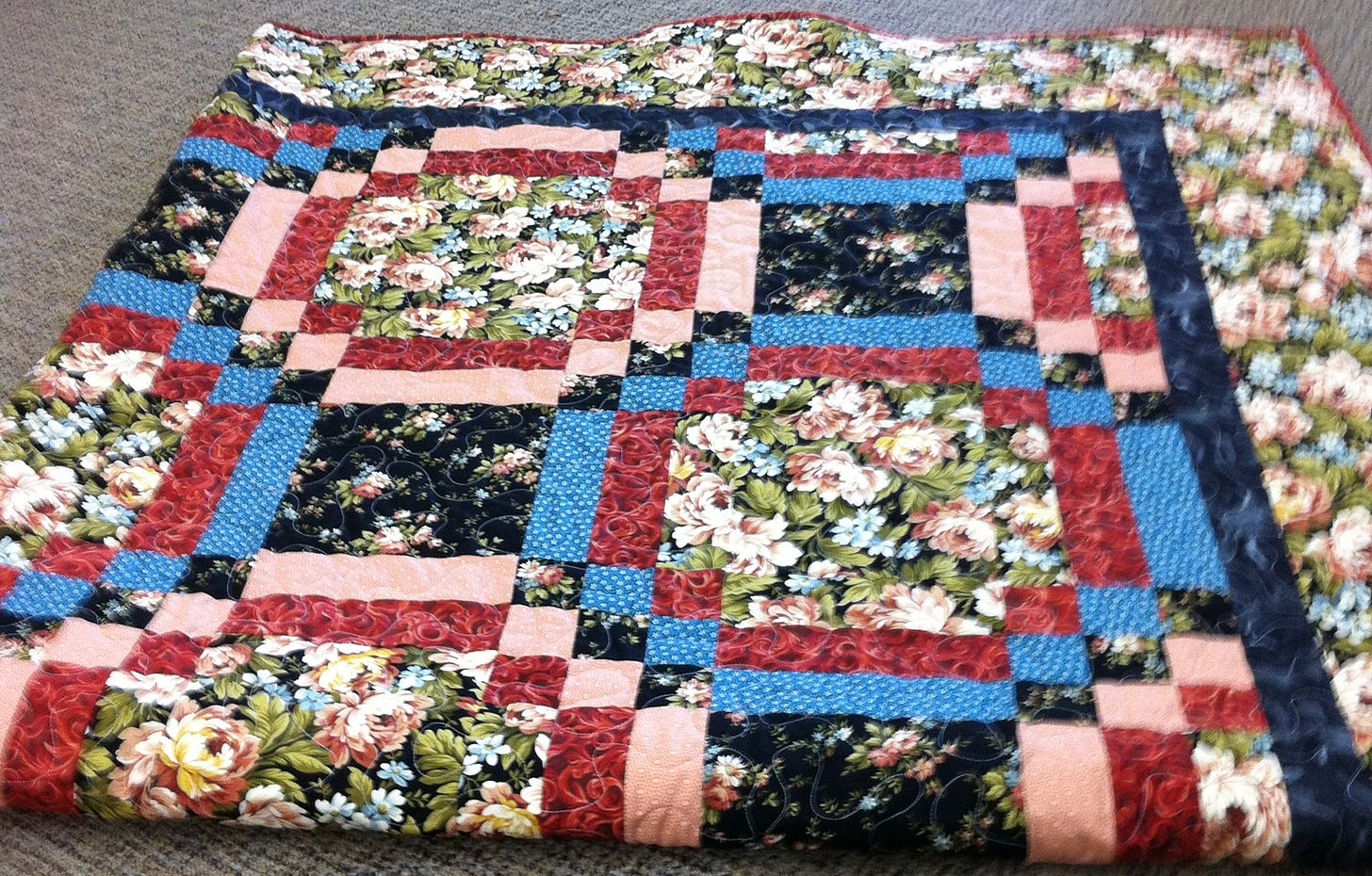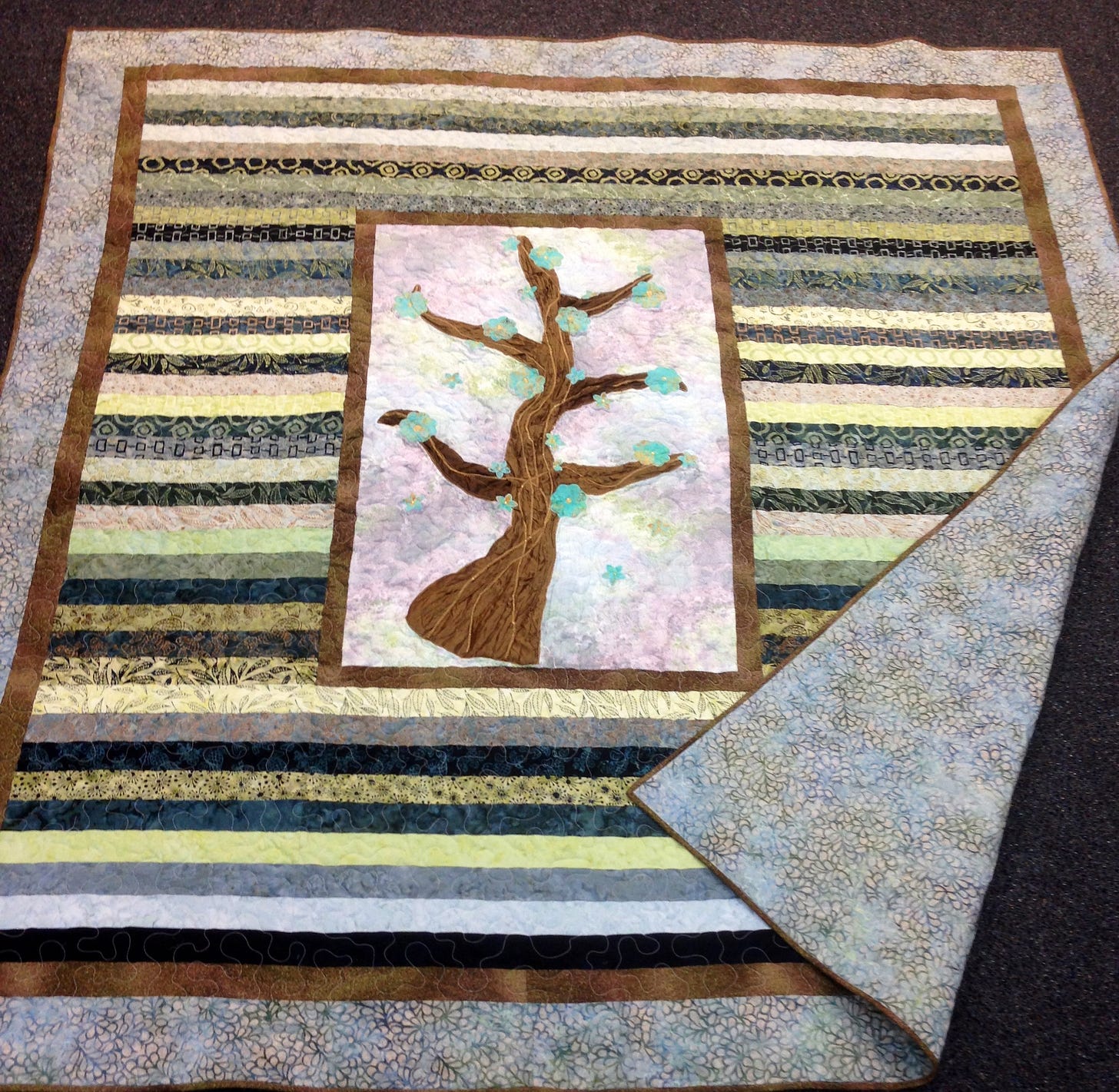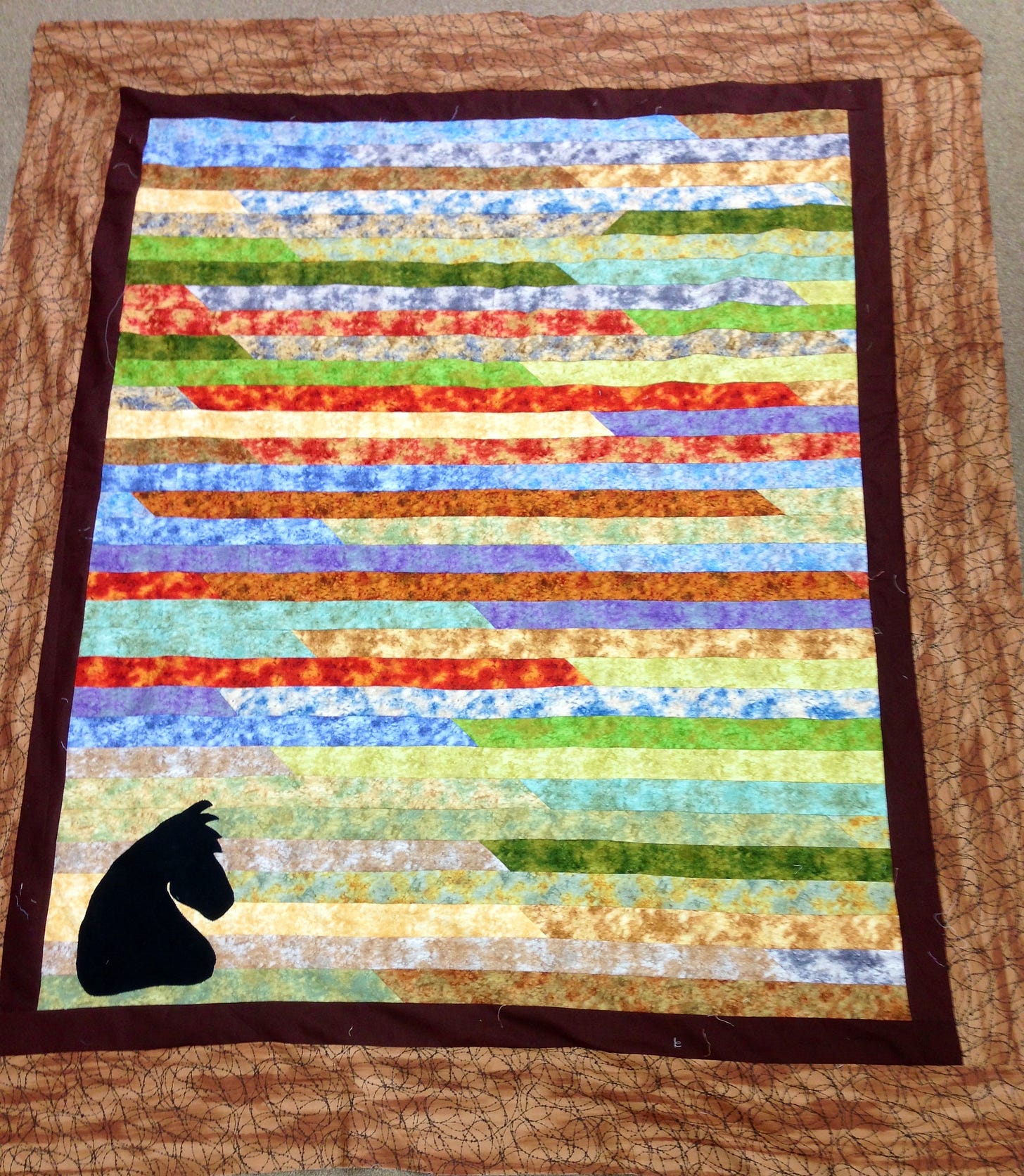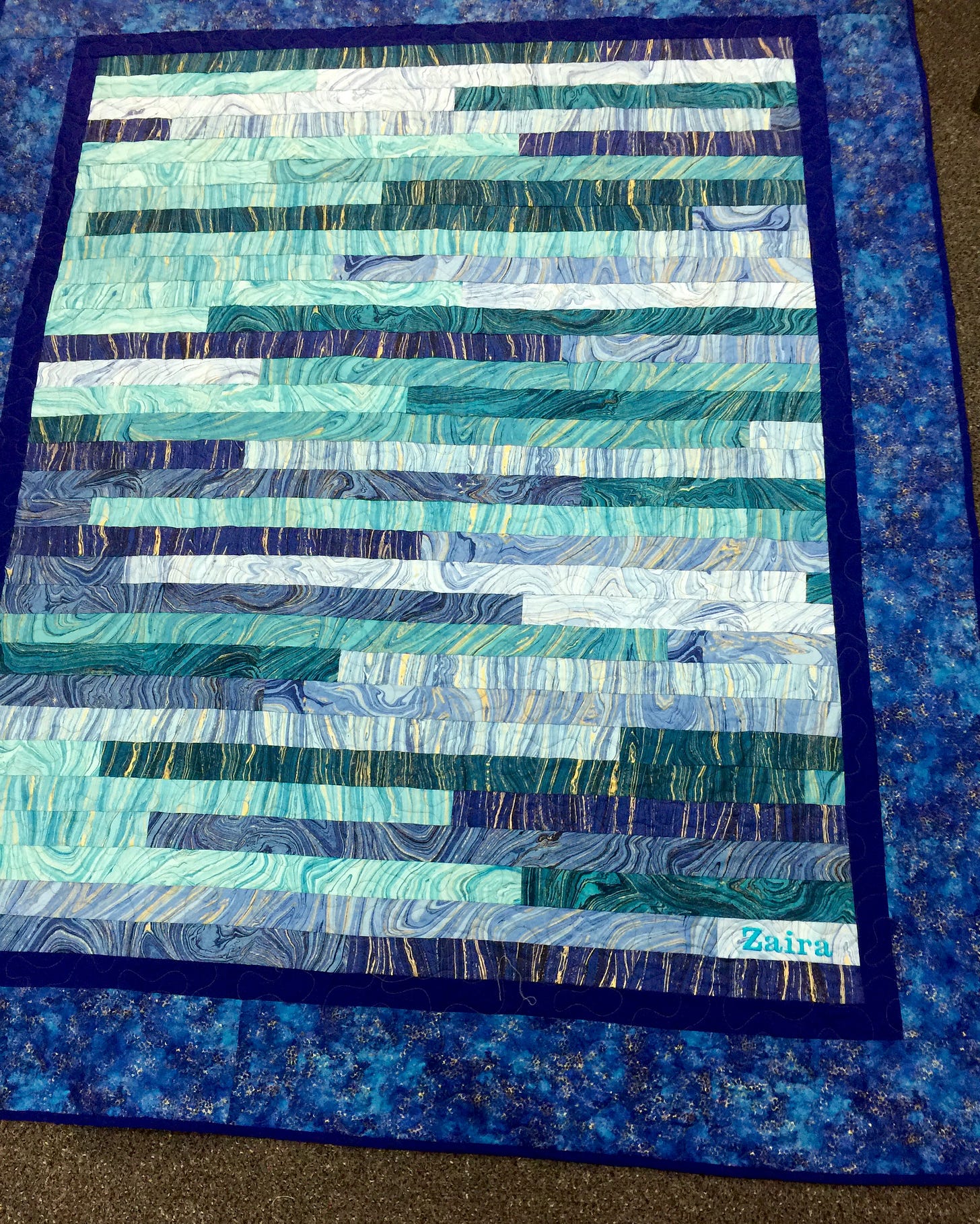How to Actually Support Someone Battling Cancer
Practical, Emotional, and Even Digital Ideas to Try
When someone I love is facing cancer—or any serious illness—I make a quilt.
Sometimes they’re simple, made from warm, soft flannel or cheerful cotton prints.
Sometimes I appliqué pieces that reflect their personality or their story: a favorite color, a memory, a private joke.
I call them Recovery Quilts, but they’re really just a way of saying:
I see you. I’m with you. You’re not alone.
The First Quilt I Made Was for Myself
In the summer of 2011, I was scheduled to have two knee surgeries.
I knew I’d be stuck at home recovering for weeks, so I planned ahead—I stitched together a quilt to keep me company through the pain and the healing.
I stayed wrapped up in that quilt all summer long. It’s still one of my favorites.
It reminded me every day that I could take care of myself, too.
That I could prepare for hard things with softness and strength.
A Few of My Recovery Quilts
A Quilt from a Dress and a Tree of Hope
This recovery quilt was made out of a dress I had worn. The tree appliqué was inspired by a painting that my friend had made—she was going in for surgery at the time. I stitched it with the intention that she’d feel wrapped in hope, creativity, and care.
A Lap Quilt for a Horse Lover
This was for a dear friend who loved horses. She was going through treatment, and I wanted her to have something personal and warm to bring to the infusion chair. I surprised myself with this one—I actually drew the horse! The quilt reminded her she was never alone in the fight.
Simple but Meaningful
Sometimes, the simplest quilts carry the most meaning. This one has a name embroidered into it, and even though it looks complicated, it’s actually a quick and easy design. The warmth comes from the thoughtfulness stitched into every seam.
This Is Just What I Do
I don’t tell people this is what they should do. It’s just how I cope when someone I love is hurting. My hands need something to do. While I cut and sew, I think about the person—what they’re facing, what they’ve overcome, what they mean to me. It’s meditative, and it helps me process the helplessness that so often comes with loving someone who is sick.
Sometimes I add their initials. Sometimes I tuck in a note. Sometimes I don’t say anything at all—I just drop it off with a hug and a “thinking of you.”
Ways to Support Someone Going Through Cancer (Even If You Don’t Sew)
Emotional Support
Be present: Sit with them, listen without fixing.
Send uplifting messages: Texts, cards, or emails that don’t require a response.
Check in regularly: A quick 'thinking of you' means more than you know.
Respect their mood: Some days they’ll want to talk. Other days they won’t. Follow their lead.
Let them be real: Hold space for fear, anger, or grief without judgment.
Practical Support
Coordinate meals: Organize a meal train or drop off freezer meals.
Offer rides: To treatment, scans, or lab work—especially when the person is fatigued.
Run errands: Pharmacy runs, grocery pickups, dry cleaning, etc.
Do household tasks: Dishes, laundry, trash day, cleaning.
Help with childcare or pet care: Even a few hours helps.
Be specific in your help: “Can I bring dinner Tuesday?” is better than “Let me know if you need anything.”
Thoughtful Gestures
Make a care package: Include snacks, fuzzy socks, hand lotion, lip balm, magazines, puzzle books.
Give gift cards: For restaurants, gas, or grocery delivery.
Offer distractions: Stream a movie together, bring over a good book, or share funny videos.
Send something cozy: A blanket, candle, or comfy pajamas.
Gift personalized items: Like handmade quilts or anything that says 'I see you.'
Digital Support
Create a shared calendar: To track appointments or coordinate help from others.
Set up a CaringBridge or Meal Train page: So people can stay updated without the patient repeating things.
Help with research or paperwork: Insurance, trial options, second opinions, etc.
Advocating and Empowering
Attend appointments (if invited): Be a second set of ears or take notes.
Speak up for them: When they’re too tired to explain or defend themselves.
Learn about their cancer type: It shows you care and want to understand.
Support their choices: Even if they choose a path you wouldn’t.
Why I Do This
Cancer is brutal. It doesn’t just hurt physically—it chips away at your sense of control, your confidence, your peace.
I make Recovery Quilts to reclaim some of that.
To say, “You’re still you. You’re still loved. You’re not just a patient.”
Quilts are tactile. You can wrap yourself in them.
And when you’re wrapped in one, you’re also wrapped in the love and care that went into every stitch.
One not-so-funny twist is that chemo left me with neuropathy in my hands.
I can’t feel my fingers the way I used to, which makes sewing so much harder.
It’s like cancer reared up again and tried to rob me of this thing I do to help other people.
But even if I can’t sew as much, I can still care.
I can still tell stories, share what I’ve learned, and remind people that softness and strength can go hand in hand.
What ideas do you have for supporting someone going through cancer? Include whether you learned this from having cancer or from supporting someone else.




